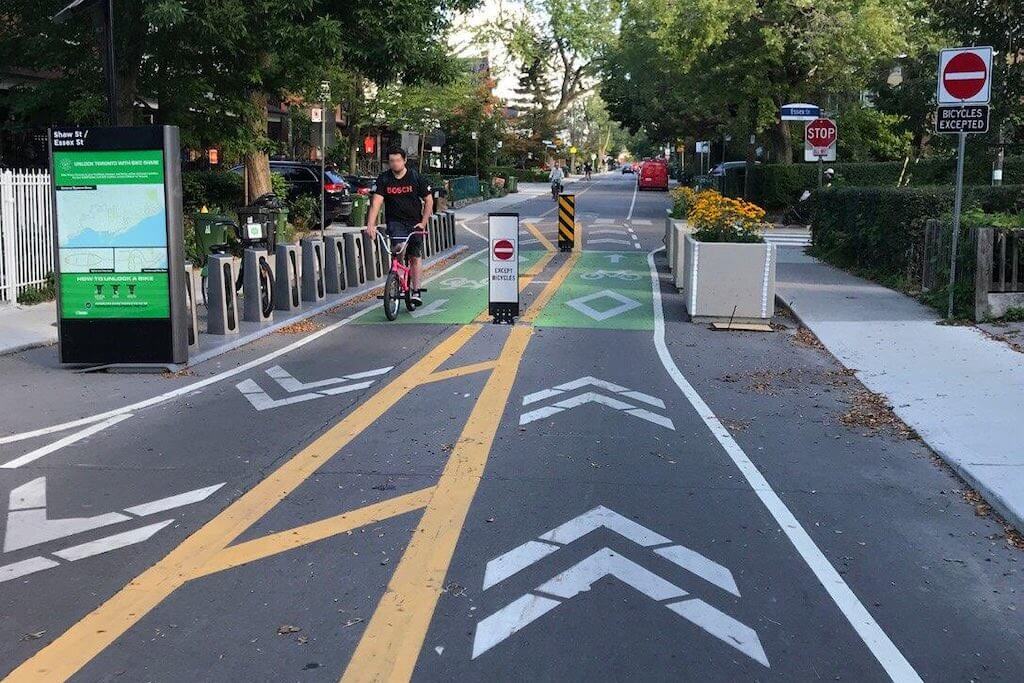Autumn Gear Guide
Find inspiration in our Gear Guide that will keep you out on your bike through wind or rain.
Download NowBicycles are not just a means of getting around – they can also have a significant impact on the financial health of cities. From reducing traffic congestion to boosting local businesses, the benefits of bicycles extend far beyond their environmental and health benefits. Just this morning, former chief planner for the city of Toronto and […]
Bicycles are not just a means of getting around – they can also have a significant impact on the financial health of cities. From reducing traffic congestion to boosting local businesses, the benefits of bicycles extend far beyond their environmental and health benefits.
Just this morning, former chief planner for the city of Toronto and all-around city-building guru Jennifer Keesmaat took to social media to relay a personal account from her past life in municipal government.
In her tweet, she recounts a time when she was pressing to get the city to adopt a somewhat-ambitious cycling plan. Now, there are no end to the reasons that people can come up to argue against this investment, despite the obvious benefits in reality. But, this time, she heard something knew. This time, an individual, an elected city councillor no less, came up with the reason that it would be bad for one of Toronto’s big economic drivers — the film industry. The Canadian city is a well-known stand-in for many American cities and, this councillor argued, the city wouldn’t be able to do that because, apparently, cities don’t have bike lanes in America.
“So I went to the film office and asked if this was true, with the thought that we could create a strategy to mitigate this,” she said. “But instead I was promptly told that streets with bike lanes were highly desirable filming locations – because Toronto is often a stand in for other cities. And other cities have bike lanes. Anyway, not long after that, sure enough, I noticed a Toronto bike lane as the background shot to a street scene in an episode of (TV show) Suits.”
She followed this up with a photo (below) of one of the city’s best cycling corridors along Shaw Streets.
“Here, the beautiful Shaw Street one of our best cycling corridors,” she wrote. “Because we can do good things. We just need a Mayor who wants to do them at scale, and without the hullabaloo.”

Shaw Street in Toronto
Let’s explore the obvious ways in which bicycles can positively impact local economies and why cities should invest in cycling infrastructure. This in addition, of course, the fighting the climate crisis, which has the potential for devastating financial loss around the world. But that’s for another article.
Bicycles are often seen as a simple and affordable mode of transportation, but their impact on local economies is often overlooked. The truth is, bicycles can have a significant positive impact on the financial health of cities. From reducing traffic congestion and air pollution to boosting local businesses and tourism, the benefits of bicycles extend far beyond their environmental and health benefits. In this article, we’ll explore the economic benefits of bicycles and why cities should invest in cycling infrastructure.
One of the biggest economic benefits of bicycles is their ability to reduce infrastructure costs for cities. Unlike cars, bicycles don’t require expensive road maintenance or expansive parking facilities. Everything is smaller, everything is more affordable for cities. This means that cities can save money on infrastructure and redirect those funds towards other important projects. Additionally, bicycles can attract tourists who are interested in exploring a city on two wheels. This can lead to increased spending on local businesses and boost the overall economy of the city.
In addition to saving money on infrastructure, bicycles can also have a positive impact on productivity and healthcare costs. Studies have shown that employees who bike to work are more productive and take fewer sick days than those who drive or take public transportation. This can lead to cost savings for employers and reduced healthcare costs for individuals and society as a whole. Additionally, regular cycling can improve overall physical and mental health, reducing the need for expensive medical treatments and medications.
Bicycles can also have a positive impact on local economies by boosting small businesses and creating jobs. When people bike instead of drive, they are more likely to stop and shop at local businesses along their route. This can lead to increased revenue for these businesses and create a ripple effect throughout the local economy. Additionally, the growing demand for bicycles and related products and services has led to the creation of new jobs in the cycling industry, from bike mechanics to tour guides.
There are studies that have been conducted that show this to be true such as these from New York City and Salt Lake City.
Investing in bicycle infrastructure can have a multitude of positive effects on a city’s economy, from increased revenue for local businesses to the creation of new jobs in the cycling industry. It’s time for cities to recognize the financial benefits of bicycles and prioritize the development of safe and accessible bike lanes, parking, and other infrastructure. By doing so, they can not only save money on costly road repairs and maintenance, but also boost their local economies and improve the overall quality of life for their residents. Let’s pedal towards a brighter future for our cities.
Find inspiration in our Gear Guide that will keep you out on your bike through wind or rain.
Download Now
Leave a comment